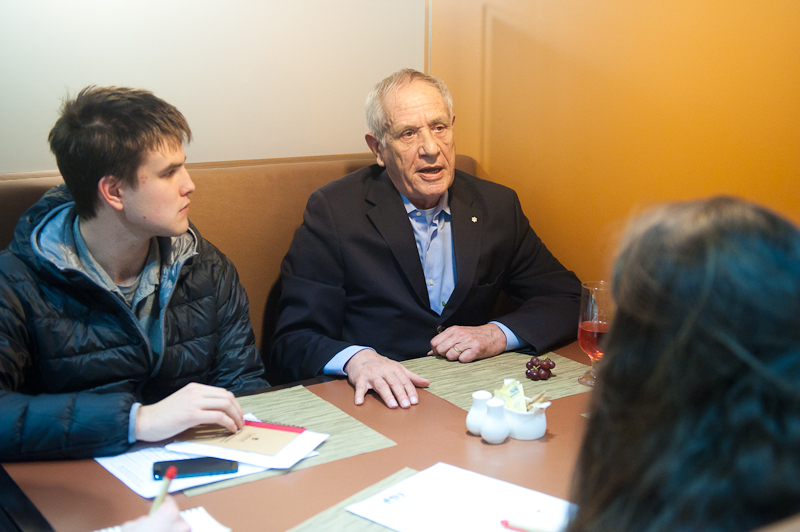
Authors and speakers involved with indigenous issues spoke with students at an Indigenous Human Library held at Carleton’s Baker’s Grille Jan. 29.
Instead of taking out a printed book, a visitor could borrow a person and have a conversation with them at the event, which was hosted by the Centre for Aboriginal Culture and Education.
The sheet of expectations handed out to the long line of visitors asked for the “human books” to be returned “in the same mental, spiritual, and emotional condition as you found them.”
“Oral storytelling is a traditional teaching tool that is still used today. It’s important that we share this way of teaching with the Carleton community, because not all knowledge is shared through writing,” aboriginal cultural liaison officer Naomi Sarazin said.
Groups had 25 minutes to have a dialogue with each human book. At the sound of the drum, which acted as a cue indicating that time was up, people leaned into their speakers, trying to ask their final questions.
There were 17 human books sitting at the tables of the dimly lit restaurant, and not one was empty.
The table where Canadian architect Douglas Cardinal sat always had extra chairs huddled around it.
Speaking about the importance of planning from the bottom up, and the process he used to create the Oujé-Bougoumou community in Quebec, Cardinal said, “the visions, the solutions, the knowledge, everything is there in the community.”
“When I went to Oujé-Bougoumou, I had each elder give me their vision for the community. Everyone’s input is extremely valuable and everyone’s input is honoured.”
He said sometimes they use an eagle feather, a turtle, or a talking stick so that when one person talks everyone listens. Everyone participates by listening.
“People are always telling other people how to be. The changes in society are not going to come from the top down. They are only going to come from the people themselves,” Cardinal said.
Poet Vera Wabegijig said she wanted to use her writing for the “betterment of humanity.”
“That is what we do as human we try to help one another,” she said.
Sarazin said she was most looking forward to how the participants would learn from each other.
“In my traditional teachings as an Anishinabe, I have come to understand that everyone is a teacher. It doesn’t matter if you’re young or old. Babies and children are teachers, as are youth, adults and elders – we can learn at all stages in our life from many different people,” Sarazin said.
“We are always envisioning new ways to share aboriginal ways of knowing on campus, and thought the Indigenous Human Library would be a creative way to do so.”
Sometimes you get more information through to people if you can make it funny. It makes people pay attention, Wabegijig said. It’s a good tool to use to let go of tension, as someone coincidently laughed aloud at another table.
“Most of my writing has been for indigenous people,” Wabegijig said.
“But when you think about it, aren’t we all indigenous? Aren’t we all from this earth? So in a way I write for everybody.”





